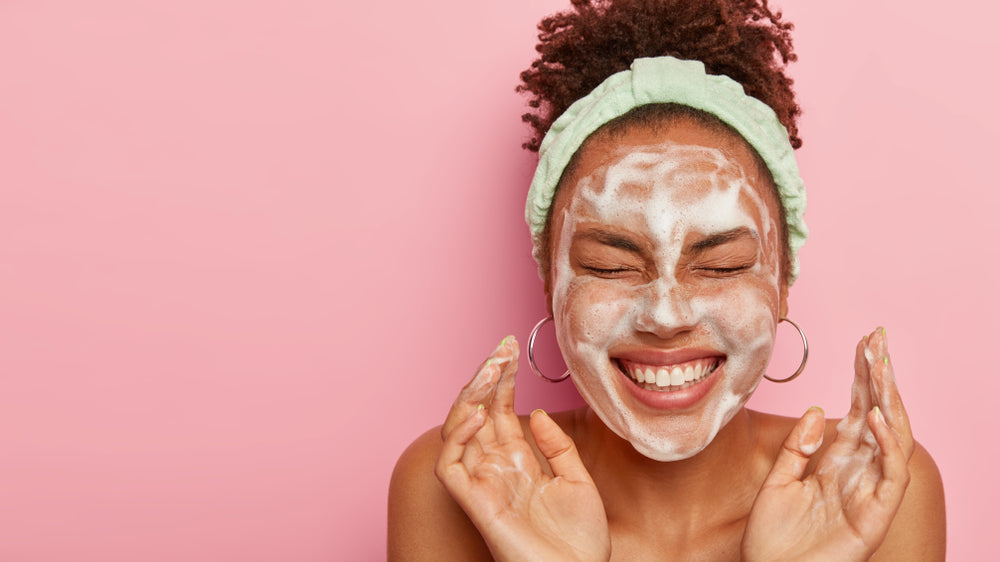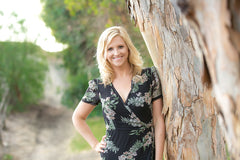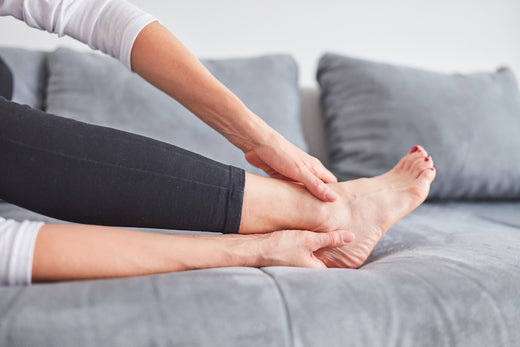
How to Use a Facial Cleanser
Cleansing your face is a vital first step in your skincare routine, setting the stage for the products that follow. Not cleansing correctly leaves your pores clogged, increasing your risks of acne and the signs of aging.
Selecting the right facial cleanser is crucial not only for effectively removing bacteria and grime but also for maintaining the overall texture and health of your skin. Using a cleanser that is mismatched to your complexion or of subpar quality can have adverse effects on your skin's appearance and feel. Also impactful? The specific way you use your facial cleanser.
Learning how to use a facial cleanser the right way – and yes, there is a right and wrong way – can make all the difference. To assist, Botanika has put together a comprehensive guide to ensure you maximize the value of your cleanser.
Step-by-Step Guide to Facial Cleansing
For perfectly cleansed skin, follow these steps to ensure your complexion is thoroughly prepped for the day ahead and deeply cleaned before bedtime.
Find the right water temperature prior to cleansing
The first step in using a facial cleanser is ensuring that the water temperature is warm but not too hot, as this can dry out the skin and increase sensitivity. On the flip side, water that is too cold can cause your pores to tighten up, which can cause acne, dirt, and bacteria to get stuck.
Be purposeful when massaging the cleanser into your skin
After applying cleanser, spend a few minutes massaging it thoroughly into your skin using small circular motions to cover your face. This process will emulsify the cleanser, which loosens up impurities and dead skin cells on the skin's surface and in the pores. Massaging the skin during cleansing also increases circulation and collagen production, offering many skin-enhancing benefits during the cleansing process.
Rinse thoroughly
The next step in the facial cleansing process is to thoroughly rinse off your face with lukewarm water. Just like at the beginning of the cleansing process, avoiding hot water will maintain the natural oils in your skin that offer a protective barrier.
Dry your face the right way
The final step is often overlooked: pattinging your face dry with a clean towel. Make sure not to rub your face and to use a gentle patting motion. Now that your skin is clean and fresh, the goal is to keep it that way. So, using a clean towel, not a dirty hand or bath towel, is necessary to avoid re-introducing bacteria to the skin.

Should You Use Cleansing Brushes?
Cleansing brushes have become a trendy skincare tool, but it comes down to personal preference in terms of whether you want to incorporate one into your routine. The benefits of using a cleansing brush include obtaining a deeper and more thorough cleanse and exfoliating the skin as you go. Incorporating a cleansing brush into your routine can also help with skin detox by stimulating your lymphatic system.
However, using a facial cleansing brush can sometimes over-exfoliate the skin. Our advice is to limit your usage to once or twice a week, though continuing to use a facial cleanser every day.
What to Look for in a Facial Cleanser
Gentle, all-natural ingredients
Choosing a facial cleanser with natural, non-toxic ingredients is vital to keep your skin safe. Cleansers should not be harsh or strip your skin of its natural oils, which can cause breakouts and dryness. Being mindful of the ingredients on the product label, along with what is not included, is essential to avoid specific chemicals that can be harmful to the skin.
Cleansing your face with organically grown, plant-based ingredients can reduce the risk of chemical irritants and increase the likelihood of a deep clean without adverse reactions. Using an organic face cleanser means the product does not contain pesticides, fertilizers, or other harmful chemicals.

Limited “filler” and junk
Unfortunately, many chemicals are often added to skincare products which can harm the skin. For example, the ingredient "fragrance" can actually mean up to 3,000 different chemicals that companies do not have to disclose!
Ingredients such as parabens and phthalates are known as endocrine disruptors, which come with a slew of potentially dangerous side effects for your skin and body. These are often disguised under the "fragrance" category. A wide range of issues, such as reproductive problems, allergic responses, migraines, and cancer, have been linked to parabens. Other harmful ingredients like sulfates and formaldehyde can be used as fillers and should be avoided at all costs.
When choosing a facial cleanser, products that include simple formulas are often the cleanest options. Cleansers that include dozens of different ingredients will likely have fillers that water down the potency.
Third-party testing verifying purity
Companies can easily use terms like "non-toxic" and "clean" on their cleansers, but it's another thing to prove by including third-party test results. Reputable skincare companies should conduct third-party independent lab testing to verify the quality and contents of each product. A Certificate of Analysis (COA) showing the lab test results should be available for each product you purchase, verifying that you are getting the quality you pay for.
When it comes to facial cleansers, or any skincare product for that matter, look for a company that is transparent about its ingredients. A reputable company will clearly state included ingredients on packaging and their website, never hiding behind terms like "fragrance."
Look No Further Than Our Deep Clean Facial Cleanser
Ideal for all skin types, Botanika Life’s Deep Clean Facial Cleanser is infused with CBD, aloe, and Vitamin E to offer soothing replenishment with every wash. Pamper your face morning and night with this organic blend of natural ingredients. Rest assured by knowing this clean facial cleanser only offers your skin the best.

Additional Ways to Maximize Facial Cleansing Benefits

Regularly wash the towel you use on your face and pillowcases
It doesn’t matter how well you cleanse your face if you wipe it with a dirty towel afterward. Towels collect dirt, oil, and skin particles from your face after each use, which can be especially problematic if you have acne. Ideally, you should use a fresh towel each time you wash your face and then put it in the laundry to prevent transferring any grime back onto your clean skin.
The same applies to dirt, bacteria, and oil transferring onto your pillowcase when you sleep at night. Since washing your pillowcase every day may be a tall task, another option is to put a clean towel on top of your pillowcase every night to keep your skin fresh and clean.
Don’t let any brushes or loofahs accumulate bacteria and grime
It is a good idea to wash your facial brushes or loofahs every 7 to 10 days and replace loofahs often to keep your skin clean. Brushes and sponges are a breeding ground for bacteria, harboring germs and dead skin cells. Keeping these items clean will ultimately help keep your skin protected and fresh.
Follow your facial cleansing with high-quality serums and creams
The next step in your skincare routine after cleansing your face is replenishing your skin with serums or creams that contain a high concentration ingredients such as Vitamins C and E. High-quality products offer skin benefits such as antioxidants to combat signs of aging, collagen to replenish firmness, or CBD to decrease fine lines and redness.
Don’t over-exfoliate or wash your face excessively
While regularly ridding your skin of impurities is good, over-exfoliation can lead to redness and irritation, leaving your skin worse than it started out. The same goes for washing your face excessively, which can strip away the good oils in your skin.
Pay attention to how your skin reacts, being mindful of any allergic reactions or overly harsh ingredients
A good cleanser should make your skin feel clean, not irritated, and never leave it feeling dry, red, or worse off than before you washed it. If you are concerned with how your skin will react to a new facial cleanser, you can spot-test it on small areas of facial skin before using it to wash your entire face.

By Emily Wegener
With a unique background as an Integrative Nutrition Health Coach, Masters Degree in Teaching and experience in Psychology, Emily spends much of her time researching and trying out new holistic healing modalities.


